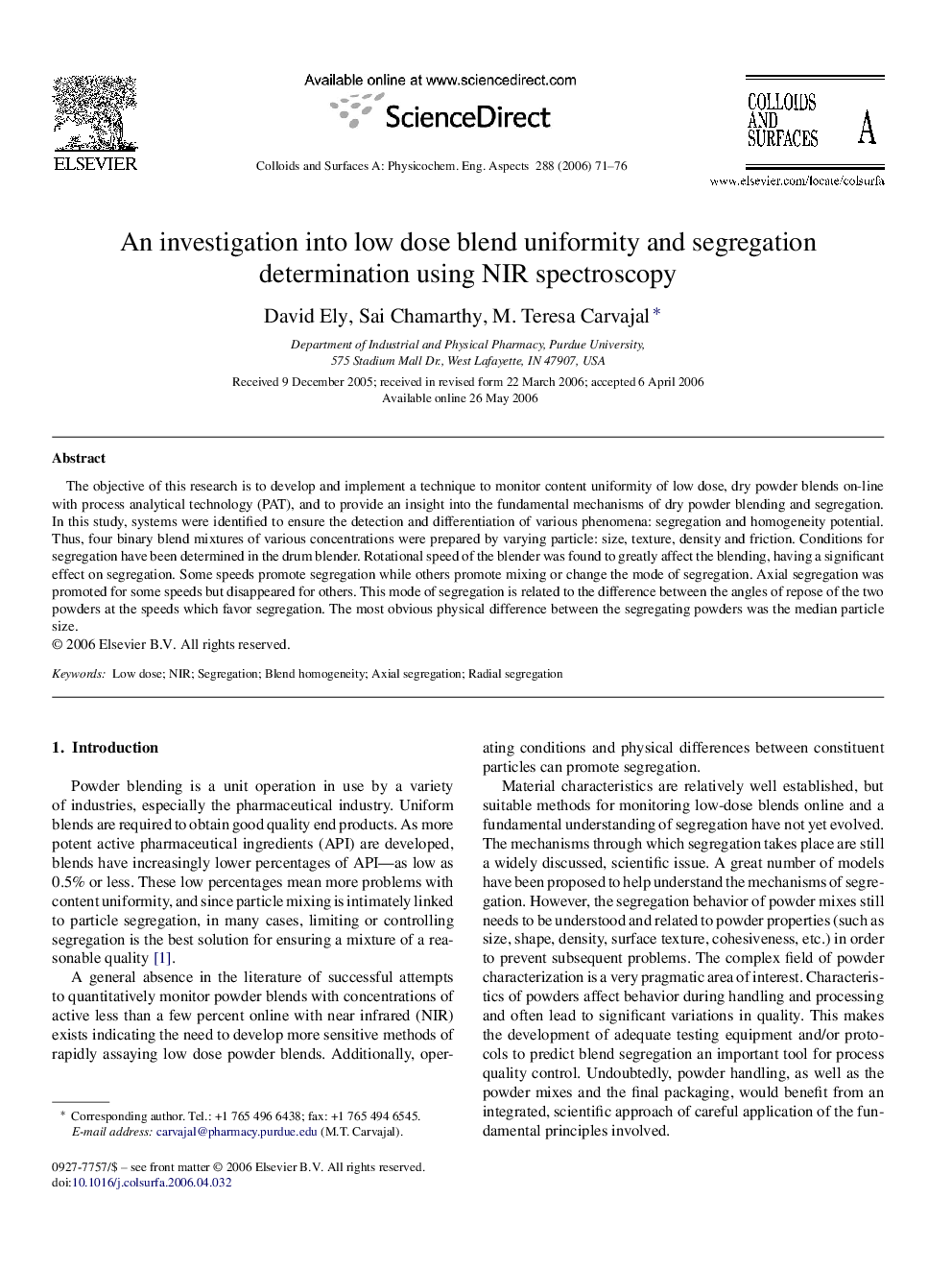| کد مقاله | کد نشریه | سال انتشار | مقاله انگلیسی | نسخه تمام متن |
|---|---|---|---|---|
| 598106 | 1454084 | 2006 | 6 صفحه PDF | دانلود رایگان |

The objective of this research is to develop and implement a technique to monitor content uniformity of low dose, dry powder blends on-line with process analytical technology (PAT), and to provide an insight into the fundamental mechanisms of dry powder blending and segregation. In this study, systems were identified to ensure the detection and differentiation of various phenomena: segregation and homogeneity potential. Thus, four binary blend mixtures of various concentrations were prepared by varying particle: size, texture, density and friction. Conditions for segregation have been determined in the drum blender. Rotational speed of the blender was found to greatly affect the blending, having a significant effect on segregation. Some speeds promote segregation while others promote mixing or change the mode of segregation. Axial segregation was promoted for some speeds but disappeared for others. This mode of segregation is related to the difference between the angles of repose of the two powders at the speeds which favor segregation. The most obvious physical difference between the segregating powders was the median particle size.
Journal: Colloids and Surfaces A: Physicochemical and Engineering Aspects - Volume 288, Issues 1–3, 5 October 2006, Pages 71–76